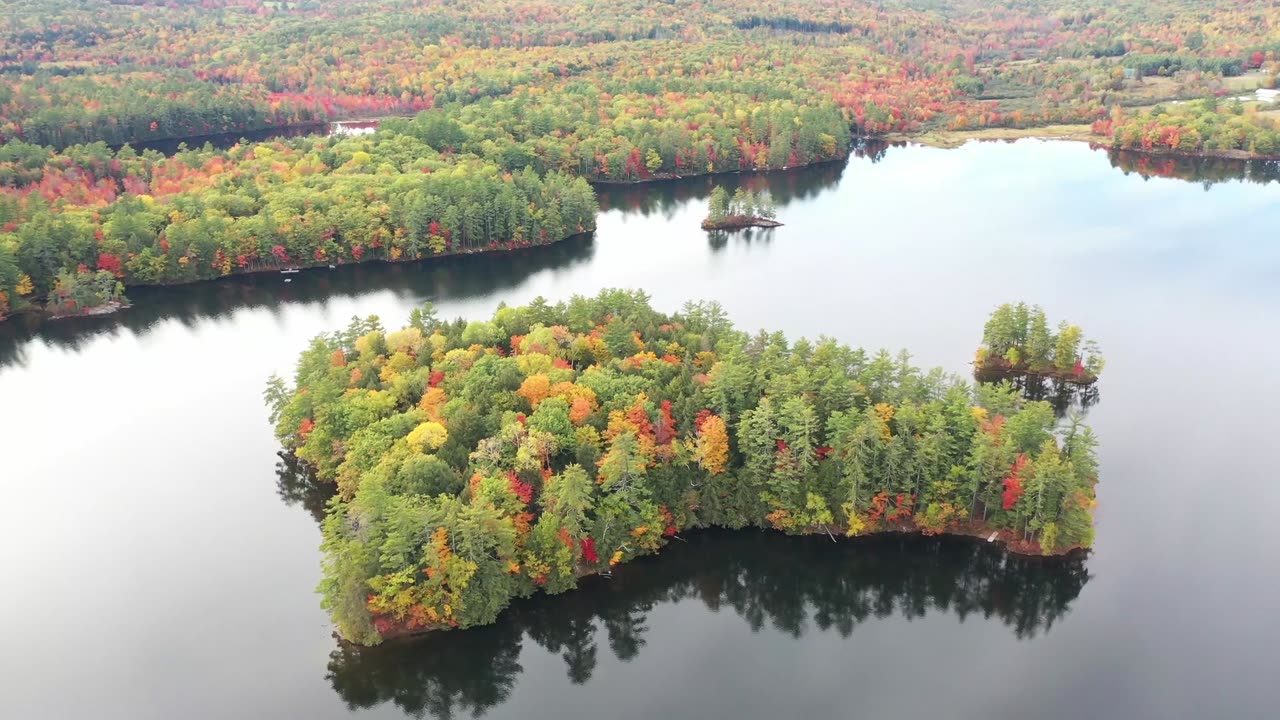Premium Only Content

Changing Colors Of The Tree Leaves In Autumn
The changing colors of tree leaves in autumn are a spectacular natural phenomenon, marked by a vibrant display of hues ranging from green to various shades of red, orange, yellow, and brown. This process, known as autumn leaf coloration, is a result of several intricate biological and environmental factors.
Chlorophyll Breakdown:
In the spring and summer, leaves appear green due to chlorophyll, the pigment responsible for photosynthesis. As daylight decreases and temperatures drop in the fall, chlorophyll production slows down and eventually ceases. The breakdown of chlorophyll reveals other pigments present in the leaves.
Anthocyanins, Carotenoids, and Xanthophylls:
Anthocyanins: These pigments produce red, purple, and blue colors. They are produced in response to certain environmental factors like sunlight and temperature changes.
Carotenoids: Responsible for yellow and orange hues. Carotenoids are always present in leaves but become more visible when chlorophyll breaks down.
Xanthophylls: These pigments contribute to yellow colors. Similar to carotenoids, they are always present but become more noticeable in the absence of chlorophyll.
Environmental Factors:
Daylength: Shorter days and longer nights trigger physiological changes in trees, signaling the onset of autumn.
Temperature: Cool nights and sunny days enhance the production of red and purple pigments.
Moisture: A lack of moisture or drought stress can intensify autumn colors, as it affects the balance of pigments in the leaves.
Tree Species:
Different tree species exhibit different colors during autumn. For example, maples often turn brilliant red, while oaks and hickories tend to display more muted reds and browns.
Geographic Location:
The timing and intensity of autumn leaf colors can vary based on geographic location. Higher latitudes and elevations often experience earlier and more vibrant displays.
Observing the changing colors of tree leaves in autumn is a breathtaking experience, attracting tourists and providing a sense of natural wonder. It serves as a visual reminder of the cyclical nature of seasons and the intricate interplay between environmental cues and biological processes in the plant world.
-
 18:14
18:14
Her Patriot Voice
2 hours agoWho Is WORSE for NYC: Trump Girl or Socialist?
3.91K15 -
 LIVE
LIVE
SavageJayGatsby
1 hour agoSpicy Saturday with Mally! | Road to 100 | $300 Weekly Goal for Spicy Bites!
568 watching -
 6:04:40
6:04:40
Akademiks
6 hours agoRoc Nation & Meg Thee Stallion did a 7 HOUR Deposition with me. Drake Secret Kid Finally Revealed.
27.7K1 -
 24:19
24:19
Stephen Gardner
2 hours ago🚨BREAKING: FBI Raid of John Bolton’s House Reveals THIS!
29.7K62 -
 8:31
8:31
MattMorseTV
4 hours ago $0.82 earnedTexas just did the IMPOSSIBLE.
27.6K56 -
 24:39
24:39
MYLUNCHBREAK CHANNEL PAGE
1 day agoInterdimensional Beings at Borobudur
38K18 -
 12:42
12:42
Scammer Payback
23 hours agoCalling Scammers who were Raided
9.46K10 -
 23:31
23:31
IsaacButterfield
15 hours ago $0.05 earnedThe Woke Mob Is Really CANCELLING Matt Rife For THIS…
16K14 -
 1:23
1:23
WildCreatures
8 days ago $0.97 earnedThis mother armadillo eating her palm nuts is truly adorable
14.4K16 -
 8:59
8:59
The Art of Improvement
10 hours ago $0.02 earnedHow to Build the Most Powerful Mindset for Success
13.1K2